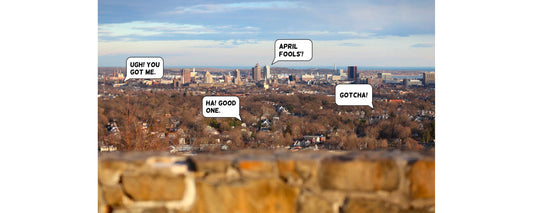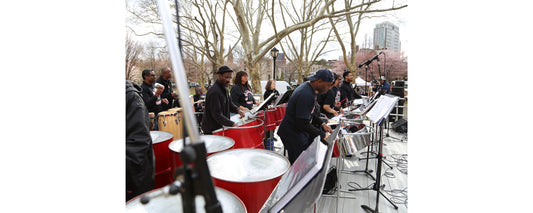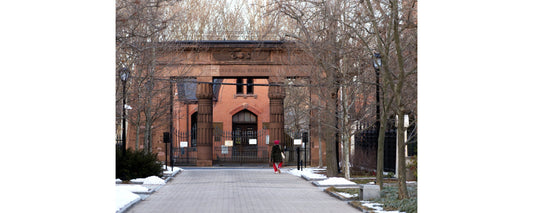The Morrill Hall Planetarium at Southern Connecticut State University is a domed appendage of the otherwise rectilinear Morrill Hall, sharing its planetary curves with an observatory on the building’s roof. At the planetarium’s recent reopening, facilities manager Eric Anderson attributed its existence to the space race consuming America and Russia in the latter 1950s, in particular the contribution of one SCSU instructor. Using a portable telescope and some math to work out the timing and trajectory, Earth Science professor Robert Brown “camped out on the roof of Engleman [Hall] with a buddy and… they were the first in the United States to report a sighting of this monumental first man-made satellite”: Sputnik.
“Morrill Hall was constructed shortly after that,” Anderson says, “and how else could there be an observatory and a planetarium attached to our first dedicated science building without Robert Brown’s input?” He suggests the planetarium may one day be named after Brown, with explanatory signage for the benefit of passersby. Either way, the planetarium’s renewal decades after it was last frequently used is itself an explanation. “The question that I’ve fielded countless times in 31 years of being on campus is, ‘What’s that dome building for?’” he says, speaking to an audience of faculty and students, most of whom were seeing the space for the first time. “And I tell them with great enthusiasm, ‘It’s our planetarium.’”
The room accommodates 48 people in the round beneath a dome of irregular fiberglass panels, but its centerpiece is the Spitz projector, developed by Spitz Laboratories in the 1950s. For half a century, it reliably projected stars from a dodecahedral ball with a bright arc lamp inside. In later years, however, it required sensitive handling. According to a Southern News report about the planetarium in 2014, Dr. James Fullmer, an Earth Science faculty member, was “the only person trained to work the machine on campus. He said it can short circuit sometimes and there are the occasional sparks that fly because of some connections breaking.”
Fullmer shared with his predecessor Robert Brown an enterprising, DIY approach to astronomy. “He was very proud of his own observatory at his home, where he was taking students. So there was almost no use of the observatory here or this room,” says Anderson, who had been a student at Southern before joining the Physics department. “I myself attended a couple of planetarium shows in here in the ’90s and in the 2000s. It was fine, but it was just so rare. I’d only hear about it once every couple of years.”
At Southern, astronomy is taught to future earth science teachers and, with greater depth and mathematical rigor, to future physicists. Such was the nature of the divided responsibility for astronomy instruction that Anderson and his colleague, Dr. Elliott Horch, kept a formal distance while dreaming of the dome’s potential uses. “The way things go in academia,” Horch says, “is a faculty member is granted some research space or some teaching space that they make their own… And this was a long-time faculty member who was responsible for regulating the space… It’s after his retirement that we turned to our friends in Earth Science and said, ‘Hey, can [we] do something?’ And they said, ‘We’d love for you to do something.’”
Anderson gravitated toward the old projector, his full-time remit being the upkeep and improvement of laboratory tools and machinery. “I have a lifetime love affair with old vintage technology. So at home, I have just rooms full of great old tube amplifiers and radio equipment and television equipment and old arcade gaming equipment… It’s industrial art to me. It’s a beautiful thing to behold.” He says this as we examine the Spitz with its console of dials and toggle switches identified in a plain postwar font supplemented by a couple of strips from an analog label maker. From the console spring medusoid appendages with glass and aluminum rings, balls and wheels at the end, each suggesting a model of a spacecraft. Activate the lamps inside and the ceiling is lit with a latitudinal grid or the Earth from the perspective of its core or the degrees of ascensions and declinations that astronomers use to track the movement of stars. Or you can simply turn on the dodecahedral ball, its lamp visible through strategically mapped pinholes, and contemplate the stars as your brain supplies the sensation that they are gradually coming out. “You have to be in here for five minutes before your eyes are adjusted,” Horch says. “Then it’s really an impressive experience.”
Horch and Anderson had imagined that the Spitz would be perfectly suited for public shows. (The first few shows of a monthly series are tentatively scheduled for stargazers in the Southern community, and the planetarium has already become a field trip destination for several New Haven school classrooms.) They also sought a digital projector to supplement the analog one. Digital planetarium projectors are effectively movie projectors with their own libraries of moving and static pictures. The presenter can make a few introductory remarks, press ‘play,’ then join the audience with their heads over the backs of their chairs until the program stops. Planetarium shows can be practically unmanned.
When Anderson first called Evans & Sutherland, one of the few companies that make digital planetarium projectors, bringing Southern’s planetarium into the digital age seemed like a moon shot. “The cheapest one you can get for a dedicated room like this is on the order of $150,000… And then there’s nothing below that.” Here, you can imagine Anderson’s office phone glumly returning to its cradle. “Until they introduced this Digistar Lite, they call it. And its real intent is as a portable. It’s so schools can go out into the middle of a football field or something, inflate a dome like they inflate those bounce houses that kids love.” The revelation for Anderson was the similarity in size between the inflatable planetarium it was intended for and the permanent one at Southern.
The two projectors are now mounted side by side, the newer one a sleek black box with a fisheye lens aimed upward. The Italian division of Evans & Sutherland fabricated a permanent stand for the box using circuitous tape measurements Anderson provided. His measurements and various micro-adjustments were equally devoted to positioning the box, the Spitz star ball and all the other Spitz components so that each projector produced a just-off-center beam, its off-centeredness invisible to the casual eye. They now appear to be one hybrid machine. At the reopening show, Anderson cued up a documentary about telescopes called Two Small Pieces of Glass. From where I was sitting, I saw parts of the movie through the transparent Earth ball of the Spitz, as if, Cyrano-like, the Digistar were projecting the movie through the Spitz.
The Digistar can also do what the Spitz does, without having to work for it. When you enter a date and location into the program, it can project the exact arrangement of stars you would be seeing if the planetarium were open to the sky. The Spitz, on the other hand, requires a directed reorientation of the dodecahedron. Dr. Horch approaches the Spitz console to demonstrate. “There are basically two axes. It rotates like this,” circling the stars around the highest point of the dome, “and then it goes up and down like this”—causing some stars to set in front of us while others rise behind us. “We’ve already looked at the rotation. But if you want to move the declination axis, it’s sort of like this.” A motor hums and the ball spins with Kubrickian patience. “I won’t move it any more because we like to park it in a way that makes the least shadow for the new projector.”
Dr. Horch has for the past few years taken his basic Astronomy classes into the planetarium for monthly sessions, the idea being to show them where to look when they study the actual sky. He calibrates the Spitz ahead of time so it will display the Connecticut sky when he turns it on. He then positions the planets of the solar system, each mounted to a wheel in the form of a pen light that can be redirected by hand. These sessions suggested to him and Anderson a variation on planetarium presentations in which stargazers would gather for the show, then go straight out to one of Southern’s fields for a much closer look. “I know there are so many homes with that same circumstance,” Anderson says. “There is that telescope that you bought for Christmas. There’s the one you got when you were a kid… And you’re sitting around waiting for a professional astronomer to say, ‘This is what you should do with this thing. Come on down to Southern and we’ll show you.’”
The relatively free association of established professionals with amateurs and upstarts may be unique to the field of astronomy. The inventor of the Spitz projector, Armand Spitz, started as a journalist and a lecturer who once built a working sextant using a dishpan, a board and a toothpick and later constructed a four-foot moon out of papier-mâché. The 12-sided design for his projector’s star ball emerged from a consultation at Princeton University with a former patent clerk named Albert Einstein, who not only changed the way the world sees space (via his theory of relativity) but also, in his contribution to Spitz’s apparatus, the way Southern does.
Written and photographed by David Zukowski. Image 1 features the Spitz projector. Image 2 features the Spitz’s console. Image 3 features a moment from Two Small Pieces of Glass.







